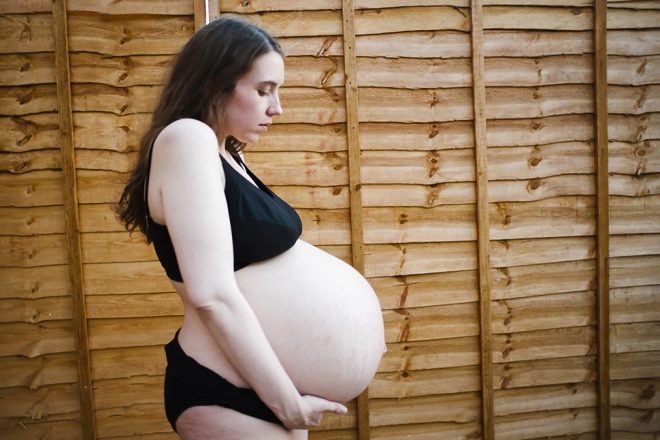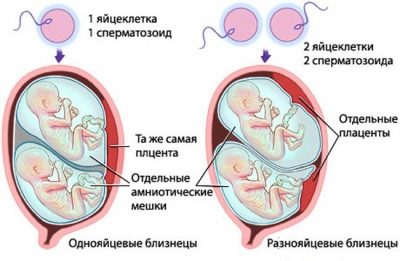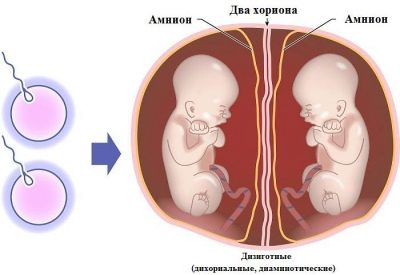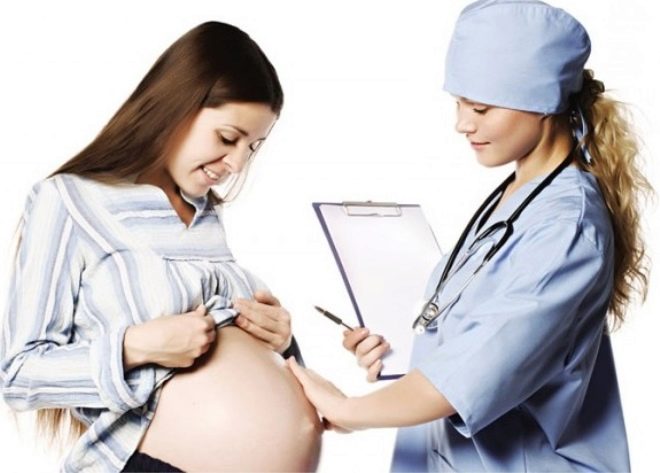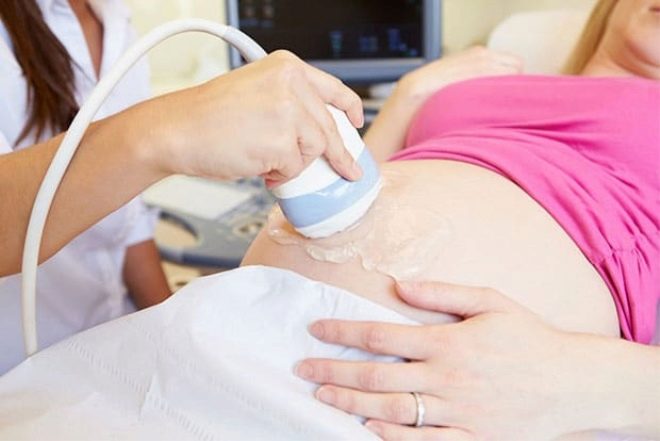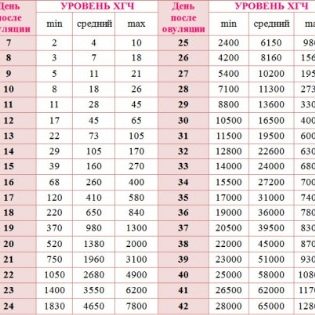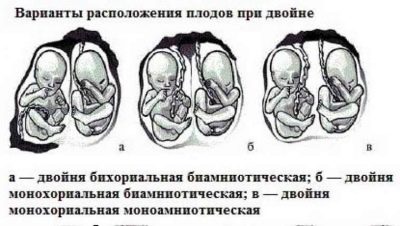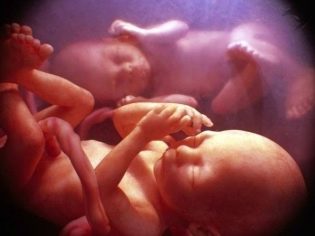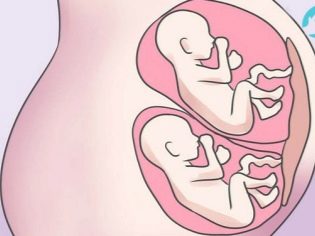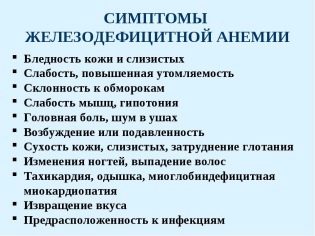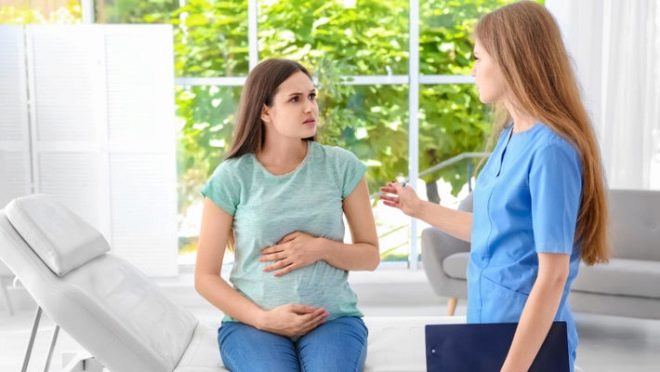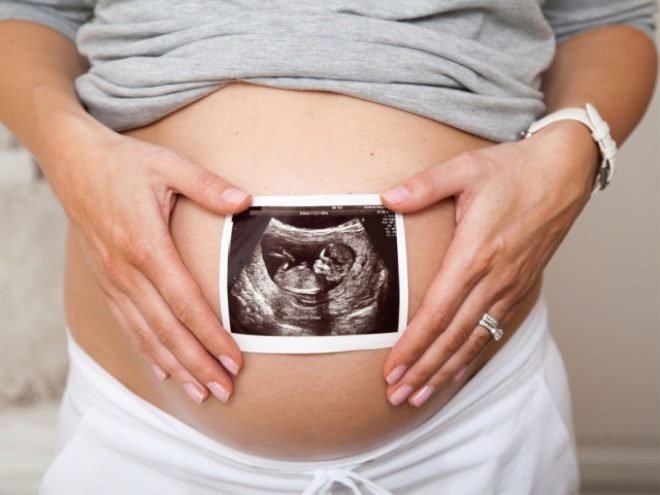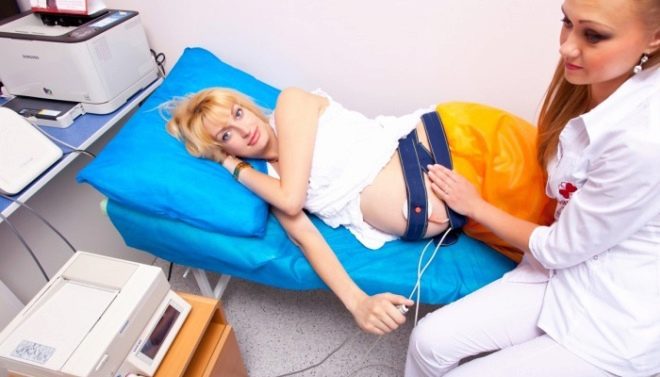All about multiple pregnancy
Multiple pregnancy is always a high-risk pregnancy, because nature has provided for the birth of one child in a person, and in the process of carrying everything in the woman's body is rearranged to the needs of one fetus.
Pregnancy is twins or triplets - double or triple load, and therefore its management and childbirth have a number of significant differences.
How to conceive twins or triplets?
Many would like to know, and is it possible to conceive twins or even triplets of free will? It is possible, but only in the ECO protocol. During in vitro fertilization of the egg, women are found with the male sperm in a laboratory test tube, or rather, in a Petri dish, and only the woman herself and the fertility doctor decide how many embryos to plant in the uterus. Again, there is no guarantee that they will all take root.
In all other cases, multiple fetuses are the providence of higher powers. Science knows exactly how a twin or triplet is formed, but it has found the answer to the question why this is happening.
Every woman of reproductive age ovulates once a month. Usually this significant event falls on the middle of the menstrual cycle. After the next menstrual period, several follicles begin to mature in the ovaries, but only one becomes dominant, the growth of the rest will be slowed down by the follicle-containing hormones. From one follicle in the middle of a cycle, one mature egg leaves into the fallopian tube. When it is fertilized, a zygote is formed - a unicellular organism containing a set of DNA of a new person. Next, implantation occurs and the carrying of a single fetus begins.
Sometimes for unknown reasons, this nature of the well-established mechanism gives some kind of failure, and on the day of ovulation two eggs come out into the fallopian tube at once. If each is fertilized, twins will be born.. They will be different from each other, each will have a different genome, they may have different gender, different characters and talents. Each child in the womb will have its own placenta, which will nourish and supply it with oxygen, each will have its own “house” - the fetal bladder with amniotic fluid. Such twins are called dizygotic or fraternal, but simply twins.
On the day of ovulation in a woman, one egg can come out of the follicle, which will be successfully fertilized, but for some unknown reason, the zygote will divide into two in a few days. This is how monozygous or identical twins are formed. They will have an identical set of DNA, which will provide them with an external similarity, the same gender.
If the zygote divides into two in the first or third day after fertilization, then each of the babies will have its own placenta and its own bladder. If the separation happens after three days, the babies will huddle in one bladder-lodge and feed from the same placenta through two umbilical cords. When splitting zygotes too late - 10 days after fertilization, accrete or conjoined twins are formed.
If on the day of ovulation two eggs came out, and both were fertilized, and one then split into two zygotes, a triplet is formed, two children in it will be identical twins and will have the same sex, and the third child will be different from them and DNA set, and possibly by gender.
More favorable prognosis for carrying out multiple pregnancies - the presence of dichorial diaminotic twins, when each child has his own placenta and fetal membranes.. The most alarming situation is the situation of the conception of identical twins, which are located in one fetal bladder and feed from a single placenta. In this case, with a high degree of probability, the stronger will “rob” the weaker.
The reasons
The medicine does not know the exact reasons why a woman suddenly becomes a mother of two, three, or even four babies at once. But there are known predisposing factors for multiple pregnancy.
It is believed that the probability of conceiving more than one child is higher in the following situations.
- There is a genetic predisposition. In the family of a man or a woman, there were cases of the birth of twins or twins. Particular attention should be paid to such cases in the ascending female line - the chances of having twins or triplets are higher for women who have women in their families (especially great-grandmother, grandmother, mother) who have given birth to twins.
- Hormonal background. If the concentration of FSH (follicle-stimulating hormone) is exceeded in a woman’s blood, the likelihood that not one but two or even three eggs will ripen will increase by about 30%. Increasing the level of this hormone may be hereditary, and may be caused by hormonal drugs, which are sometimes prescribed to stimulate ovulation in infertility in women. It is noteworthy that the level of FSH is almost always elevated in women, who have only canceled oral hormonal contraceptives in the entire cycle ago. If at the same time the woman managed to take the means to stimulate ovulation, then the probability of multiple pregnancy will be very high.
- With IVF. To increase the chances of pregnancy in the treatment cycle of in vitro fertilization, several eggs are fertilized, and to increase the likelihood of implantation of at least one, 2-3 zygotes are planted. If everything is implanted, a multiple pregnancy occurs.
- With repeated pregnancy. In primiparous, multiple births are more likely to be rare, most often two or three babies “make happy” parents who already have children of their own. Repeated delivery increases the probability of conceiving several fruits, but only slightly.
- Age of the future mother. Typically, the probability of multiple pregnancy increases with the age of the ladies. In women over 35, the probability of conceiving two or three children is estimated at 25%.
Statistics
Worldwide, an increase in the number of multiple pregnancies. Over the past two decades, the number of such cases has doubled. In the total number of pregnant women who have twins or triplets, they account for about 1-1.5%. For every 87 births there is one twins, for every 6.5 thousand births - triplets. The fourth in one case is born in 51 thousand genera.
In women carrying several fruits, the risk of miscarriage, premature birth is 5 times higher than in singleton pregnancy. The birth of children with extremely low body mass with multiple fetuses occurs 10 times more often than with singleton pregnancies. 54% of multiple pregnancies end in preterm labor. All this explains why doctors are so sensitive to pregnant doubles or triplets, why there is a special plan for managing such expectant mothers.
Signs in the initial stages
In the earliest periods before the delay, multiple pregnancy is not much different from singleton pregnancy. No special feelings a week after sex, which led to the conception, nor after two weeks, will not appear.The most that a woman can feel before the delay and in the first week after her is the action of progesterone. But future moms of twins and future moms of the same baby feel it to the same extent.
How does the effect of this hormone, ensuring the safety of pregnancy:
- fatigue increases, drowsiness appears;
- headaches may occur;
- the temperature of the body may slightly increase, a feeling of chill or heat appears;
- frequent urination;
- a feeling of nasal congestion may appear due to swelling of the mucous membranes under the action of progesterone;
- appetite increases or disappears.
All the same signs may be present (or may be absent) during singleton pregnancy.
Even after the fact of pregnancy ceases to be a secret for a woman, she can still not realize for a long time that more than one baby develops inside her.
The allegations that doubled toxicity is not true. There are quite a few women who did not suffer from toxicosis at all, bearing twins, and there are those who suffered with one baby.
Recognize the symptoms of multiple pregnancy before the delay of menstruation and some time after it is thus impossible. Some women, according to reviews, claimed that they felt twins intuitively, but this question has nothing to do with medicine, there is no possibility to find an explanation for him.
Diagnostics
Diagnostic signs of multiple pregnancy, some are beginning to look almost from the test, which is carried out at home. Women claim that with double or triple strips on the test is brighter than with singleton pregnancy. In part, an explanation can be found - if two different placentas form in the fetus, the level of human chorionic gonadotropin (HCG hormone) will be twice as high, namely, it stains the test strips.
The blood test for hCG also shows double values with double or triple with triple values, but only under the condition that the fetuses have different placenta. If monochorial twins develop, the level of hCG will be standard.
A more informative method to determine multiple pregnancies is ultrasound. Already in the 7th week of pregnancy, you can determine the presence of identical twins, and twins it can be seen earlier - at 6 weeks in the uterus, two fetal eggs are clearly visualized.
After 5 weeks of pregnancy, the heart begins to beat in the fetus. With a transvaginal transducer, ultrasound scan from 6 weeks of gestation can be used to hear fetal heartbeats. Multiple heartbeat cycles can lead doctors to the idea of multiple pregnancy. But at this time even the heart of one fetus knocks confused, and therefore more reliable is the registration of the heartbeat of the fetus after 10 weeks of pregnancy.
In later periods, signs of a multiple fetus become earlier stirring - from about 15-16 weeks, while a woman begins to feel one toddler from about 19-20 weeks. The size of the uterus and the height of its bottom will exceed the gestational rate. From the middle of pregnancy, using auscultation, the doctor listens through the anterior abdominal wall not one, but two or three points of heartbeat at once.
Not one hundred percent, but sufficiently informative for the doctor will be the blood tests of the pregnant: in the blood of the future mother expecting twins or triplets, from the first trimester, not only the hCG content is increased, but also the concentration of placental lactogen, progesterone.
Thus, to obtain evidence that the current pregnancy is multiple, a woman can already at 6-7 weeks of pregnancy.
How do fruits develop?
Early period - the period of embryogenesis in all embryos, regardless of their number in the uterus, is the same. In the same time frame organs and systems are formed.
Differences between children in multiple pregnancies and singleton begin after the end of the first trimester, when the period of active growth and weight gain begins. Babies, which are few, usually weigh lessthan their peers who live alone in the womb, there is a difference in growth rates.
Here are the main stages of development of twins or triplets in the womb.
- 5 week (just a week after the start of the delay) children form hearts, the heartbeat starts, and the kidneys and liver are laid.
- On week 6 hands, initial facial structures are formed. The organs of the immune system are laid.
- On week 7 the first nerve fibers are formed, which will become the basis of the nervous system. The only intestine in each fetus is divided into sections of the gastrointestinal tract.
- 8 week the babies are starting to move. A young placenta begins to work. The brain is separated from the spinal, legs grow.
- On week 9 the embryonic tail decreases, the teeth beginnings are formed.
- 10 week embryonic period ends. Children are called fruits. All internal organs are formed. Kids move, swallow, clench their hands into fists. Begin to harden the bones of the skeleton.
- At week 11 prehensile and sucking reflexes are formed.
- At week 12 the babies acquire taste buds and begin to discern the taste of water, the formation of genitals is completed.
- On week 13 the active growth of the medulla begins.
- On week 14 each of the twins receives their own fingerprints, and even with identical ones with identical DNA, the fingerprints are different.
- 15 to 17 weeks muscle formation is completed. The process of accumulation of subcutaneous fat begins. Women feel perturbations, babies have mastered a large number of mimic grimaces.
- 18-20 week mineralization of the skeleton bones is completed. A rumor forms at 20 weeks.
- From 22 weeks lanugo starts to fall - thin hairs on the skin, holding a protective layer of moist-like lubricant. From this time on, childbirth is not considered a miscarriage. They qualify as premature birth.
- On week 23 spine formation is completed.
- From 24 weeks ripening of the lung tissue begins, in the tiny vesicles of the alveoli a special substance is produced - surfactant, which, when accumulated in the right quantity, will allow children to breathe independently after birth.
- On week 26 Pregnancy begins to produce growth hormones, in boys, the testicles begin to descend into the scrotum. Eyesight improves.
- 28 weeks women go for antenatal leave. With singleton pregnancy, maternity leave occurs only at 30 weeks.
- 30 week babies bend to fit in the uterus, and significantly reduce locomotor activity.
- From 34 weeks the placenta (or placenta) begins to age.
- 35 weeks children activate the adaptive mechanisms of the central nervous system. This will help them adapt to the new habitat after birth.
- From 37 weeks children are considered fully term.
Mom's well-being
The course of multiple pregnancies is markedly different from the course of a normal pregnancy, because most of the clinical recommendations that exist for pregnant women are not too relevant for twice or three times expectant mothers. The main difference between pregnancy is twins or triplets - an increased risk of complications. Unfortunately, medical statistics are disappointing - up to 85% of multiple pregnancies occur with various complications.
Pregnant women with more than one baby start to grow up in their abdomen, their state of health and condition deteriorates earlier, they are 2-3 times harder to carry their children. After the news that a woman expects twins, she should prepare in advance for the fact that it will be very difficult. Very often such pregnant women develop iron deficiency anemia. Double doses of iron preparations will help to avoid unpleasant consequences of such a condition.which the doctor will prescribe from the first trimester of pregnancy.
In case of multiple pregnancies, severe toxemia develops more frequently in the early stages, which may require hospitalization and inpatient treatment. The risk of severe preeclampsia is 5 times higher in the second and third trimester of pregnancy. The risk of the formation of placental anomalies is 4 times higher - its presentation or partial presentation, which makes natural childbirth impossible, children will be born by caesarean section.
If children are fed from the same placenta (monochorial twins), then there are high risks of premature aging of the placenta. "Baby seat" quickly develops its resource. This complication threatens the state of intrauterine hypoxia for children, developmental delays and even intrauterine death. There is a risk of improper presentation of the fruit. Especially dangerous is the pelvic or transverse presentation of the child, which is closer to the exit of the uterus. In this case, too, will have to give birth by cesarean section on the operating table.
The risk of preterm birth is very high, almost half of multiple pregnancies end up much earlier.
The uterus grows twice as fast, the first movements are felt earlier, but already at the end of the second trimester, the uterus is overly stretched, which leads to the emergence of a wide variety of pain sensations.
The load on all systems of the female body during multiple pregnancies is high. That is why at any time old, chronic diseases can aggravate, the existence of which, possibly, a woman has forgotten for a long time. The most frequently exacerbated diseases of the heart and blood vessels, kidneys and liver. The risks of hemorrhoids, varicose veins, and hypertension increase several times.
The nature of the discharge in multiple pregnancies is not much different from the discharge in singleton pregnancies, in this paragraph you should not look for significant differences.
Pregnancy management
Obstetricians and gynecologists have special instructions for managing multiple pregnancies, because the risks are really high and the danger is not exaggerated at all.
A woman who bears several fruits will have to visit her doctor more often.. The condition of such a pregnant woman needs more frequent monitoring. Everything is important - and weight gain, and the appearance of edema, and urine tests. Particular attention will be paid to the prevention of preeclampsia. A woman will have to make a coagulogram several times during the term of a pregnancy - a special blood test that shows her blood clotting factors, and will often undergo a complete blood count for early detection of changes in hemoglobin concentration.
From the first trimester, the future mother of two or three children will receive all the recommendations on proper nutrition, in terms of physical activity. Multiple fertility is considered a good reason for limiting physical activity already from the second trimester in order to reduce the risks of premature birth.
At 20 weeks, the state of the cervix will be examined to rule out its premature shortening, isthmic-cervical insufficiency, because the pressure of the fruit on the internal opening of the cervix is twice as high.
From 29-30 weeks, weekly CTG is prescribed for pregnant women with several fetuses. A cardiographic study (non-stress test) will give rich food for thought to the doctor - how do babies feel, are there any signs of hypoxia, is their vegetative nervous system well developed. If there are any doubts, they will conduct an Doppler ultrasound (Doppler) to assess the nature and speed of blood flow in the umbilical cord of each fetus, the state of the placenta (or placenta, if it is one for two).
A woman should be morally prepared in advance for the fact that in any incomprehensible situation, with a deterioration of the test results, she will be hospitalized in the hospital.Under medical supervision, the chances that everything will be all right with the children and their mother are always noticeably higher.
Childbirth
Clinical recommendations of the Ministry of Health of Russia indicate that for multiple pregnancies, gestation up to 40 weeks is undesirable. Therefore, if the childbirth itself does not begin until 37 full weeks, when the children will be considered fully mature, it is recommended to hospitalize the pregnant woman and stimulate the childbirth.
If there are indications for cesarean section, it is recommended to carry out at 37-38 weeks of pregnancywhereas in singleton pregnancy, it is 39 full weeks. With identical twins in one fetal bladder, surgery is 33-34 weeks, since there are high risks of umbilical cord torsion, and with triplets, it is recommended to perform a cesarean section in 34 full weeks.
The decision in favor of a cesarean section is usually made if:
- during pregnancy there were complications, there is preeclampsia, abnormal weight gain, edema;
- The presentation of the first fruit is not the head, but any other;
- twins are not just monochorial (having one for two placenta), but also monoamniotic (one sac of bubble for two);
- placenta previa;
- the presence of chronic diseases in the mother, in which natural childbirth may have unfavorable projections;
- pregnancy resulting from an IVF cycle.
Many people wonder if natural childbirth is possible with multiple births. Yes, they are quite possible, and many moms successfully give birth to their babies through the physiological birth canal. But those who have natural childbirth, you should know that every third woman in childbirth amniotic fluid pours out prematurely, at the same time quite often in a sexual way loops of a umbilical cord, extremities of kids fall out. Other possible complications of childbirth include the risk of weakness of labor forces, which occurs because the walls of the uterus are critically overstretched.
The period of exile of the first child usually slows down to prolonged labor, which is dangerous with acute hypoxia of fetuses, death of children or their disability.
If the birth is premature, then they often proceed rapidly, which is fraught with birth trauma and ruptures of the perineum, cervix.
The most dangerous is such a complication as premature discharge of the placenta after the birth of the first child. If this happens, the second baby may experience acute hypoxia, which can kill him or cause irreparable damage to his brain.
During the entire birth process, doctors closely monitor the fetal heartbeat with CTG. Epidural anesthesia, stimulating contractions, will be ready at any time if the labor force is weakened. Modern obstetricians are always reinsured, and while the woman in labor is in the stage of contractions, an operating and surgical team is prepared in case complications arise and an emergency caesarean section has to be done. - In case of multiple births, such a need does arise quite often.

